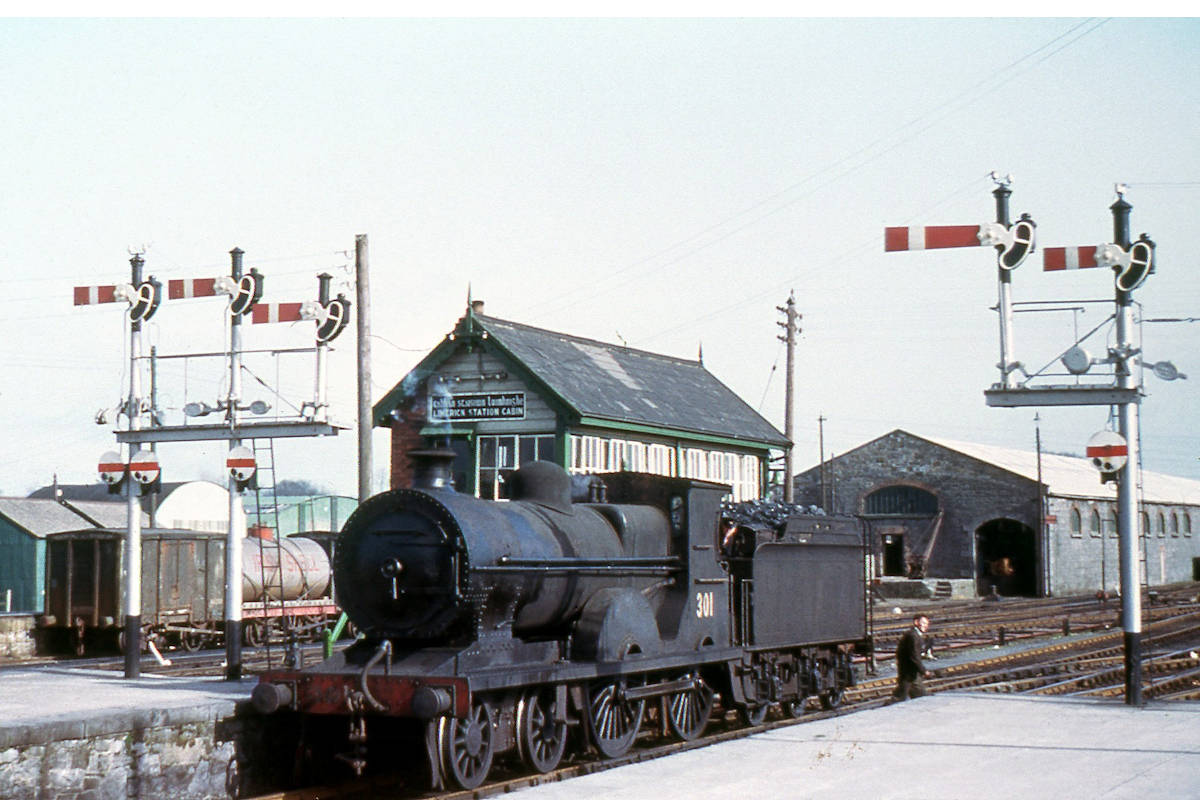14th February 2023 “Back to Old Ireland” by Mike Page

Few countries epitomise rural railway operation more so than Ireland in the 1950s and Branch Member Mike Page illustrated this magnificently in his ‘Back to Old Ireland’ talk.
Beginning with Britannia 70045 Lord Rowallan on the Irish Mail, Mike described his childhood travels from the West Midlands to relatives in Abbeyfeale, County Limerick, with colour scenes of trolleybuses in Wolverhampton, the West Coast Postal at Crewe, MV Hibernia and MV Cambria at Holyhead and arrival at Dun Laoghaire with GSW Class J15 No. 122 on a boat train to Dublin Westland Row and Amiens Street.
Various Dublin scenes then followed with CIE-liveried buses and trolleybuses, 0-6-0 diesel shunter D303 at North Wall docks in 1950 and K1 Class 2-6-0 No. 383 departing on a freight from Kingsbridge.
After Dublin, we headed down the main line via Thurles (seeing 1951 Inchicore-built diesel 1101), to arrive in Ballybrophy where we reversed to head out to Limerick via Roscrea.
At Limerick we were treated to delightful views of the station’s semaphore signals and D12 4-4-0 No. 301 posing in the sunshine. Mike recalled that there was only one train to Tralee which left at 4pm so he and the family would head into town for an extended lunchbreak and a drink or two.
The run to Newcastle West and Tralee was unhurried, taking three hours for the 70 miles. Mike recalled stopping for cows on the line and picking up livestock in the two or three horse boxes in the formation. Milk churns were collected at Newcastle West, where 10 minutes were allowed for the J15 to run round, before heading to the journey’s end for Mike and family at Abbeyfeale. The station closed to passengers in 1963, with the line closing completely circa 1973.
We then saw scenes on a variety of local lines including the Tralee and Dingle and the Listowel and Ballybunion, finishing at Tralee. Tralee had two D17 4-4-0 locomotives, similar to No. 59 which we saw on a Limerick Junction working. Moving on to Limerick Junction we were treated to the remarkable sight of all four platforms in use by trains which each had to reverse into its platform!
In the second part of the evening, we focused on more recent scenes, starting with the ‘Cork 800’ excursions on 11th and 12th May 1985. We followed GNR(I) ‘S’ Class 4-4-0 No. 171 Slieve Gullion from Dublin Connolly round to Liffey Junction and down to Cork, including views of the Canal Street steam crane at Limerick Junction. At Cork we saw the lovely semaphore signals at the East end of the station and GSW J15 0-6-0 No. 184 working to Cobh and back. Returning the next day, 171 and 184 were seen double heading the excursion to Mallow, where it split into two portions to run to Limerick Junction. At Limerick Junction they re-combined with 171 taking the excursion to Connolly and 184 running light engine to Mullingar.
The evening concluded with a run on the Earl of Desmond railtour from Dublin to Tralee and back on 6th/7th May 2006. The tour began at Heuston station behind LMS (Northern Counties Committee) Derby-built 2-6-4T No. 4 which took the train as far as Mallow. Here No. 4 was exchanged for J15 No. 186 for the run to Tralee and back the next day. The reversal at Killarney was well illustrated – and the 1:75 bank up to Tralee which No. 186 took in its stride – and we saw scenes at Farranfore station, the junction for Valentia Harbour, the Westernmost station in Europe.
A most enjoyable evening was had by everyone present, not just for the railway content but also for Mike’s highly entertaining anecdotes of life in 1950s Ireland. The meeting closed at 9.40 pm with great applause, to be sure.
